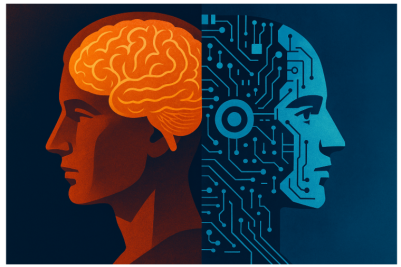AI and Africa’s Economy: Growth Simulations and the Policy Choices Ahead
By Richard Sebaggala
OpenAI's analysis certainly showcased AI's impressive capabilities. Globally, over 500 million people now use OpenAI tools, exchanging 2.5 billion messages every day. In the United States, ChatGPT has been a significant time-saver, helping teachers save nearly six hours weekly on administrative duties and state workers 95 minutes daily on routine tasks. Entrepreneurs are also launching startups much more quickly than before, and a significant 28% of employed U.S. adults now use ChatGPT at work, a big increase from just 8% in 2023. However, the report largely overlooked Africa, a continent facing distinct challenges such as lower internet access, less developed digital infrastructure, a higher informal economy, and systemic obstacles that slow down quick adoption. Despite this, Africa has shown with the mobile money revolution that it can bypass entire stages of development when the right technology emerges at the opportune moment.
Modeling Africa's AI Future: My Approach
To explore the potential impact, I created a simulation model. This model used the same productivity factors as OpenAI's analysis, but I adjusted them to fit Africa's unique economic conditions. My focus was on Sub-Saharan Africa, with a specific scenario developed for Uganda. I examined three different AI adoption levels: low (10–15% of the workforce), medium (30–40%), and high (60–70%). My starting point assumed a 3% annual GDP growth without AI. I then factored in productivity increases based on adoption: 0.5% for low, 1.2% for medium, and 2% for high adoption across Africa. For Uganda, I made slightly lower adjustments due to more significant infrastructure limitations.
Africa's Economic Boost: A Trillion-Dollar AI Opportunity
The potential impact of AI on Sub-Saharan Africa’s economy is remarkable. The region’s total economic output (GDP) is approximately $1.9 trillion. The projections show that by 2035, AI could add significant value depending on how widely it’s adopted:
- Low AI adoption could add an extra $150 billion to Sub-Saharan Africa’s economy.
- Medium AI adoption could boost the economy by an additional $360 billion.
- High AI adoption has the potential to add over $610 billion.
Uganda's Economic Outlook: Significant Growth Potential
Uganda shows a similar promising trend, though on a smaller scale. Starting with a GDP of $49 billion in 2024, our model projects these outcomes by 2035 based on AI adoption:
- Low AI adoption could see Uganda's GDP reach $65 billion.
- Medium AI adoption could push the GDP to $71 billion.
- High AI adoption could result in a GDP of nearly $77 billion.
This projected increase represents billions of dollars in new economic activity for Uganda. These additional resources could be invested in creating jobs, improving infrastructure, and enhancing social services across the country. Beyond just economic figures, jobs are also a crucial factor. Even if some jobs change due to AI, the analysis indicates that a medium or high adoption of AI would lead to an overall increase in available jobs. AI can free up workers from repetitive tasks, allowing them to take on more complex and valuable roles. However, without investing in training people for these new skills, this shift could worsen existing inequalities, particularly in rural areas and informal sectors.
AI's Impact Across Different Sectors
AI adoption won't affect all parts of the economy in the same way. Service industries are likely to gain the most, given that they rely heavily on knowledge work. Manufacturing will also see benefits. However, agriculture, which is Uganda's largest employer, will experience slower productivity improvements unless AI tools are specifically designed for small-scale farmers. This means developing things like precision farming applications and market information platforms. Because of this uneven impact, it's crucial to have policies that don't just focus on people working in cities but also extend AI's advantages to our agricultural areas.
Why Policy Decisions Matter for AI?
The main message here is that Africa simply cannot afford to sit back and watch the AI revolution unfold. The productivity gains I modeled are not automatic; they depend entirely on the deliberate choices we make. For Uganda, and for Africa more broadly, there are five key policy areas that need our attention. First, we need to introduce AI learning in schools, universities, and vocational training programs, fostering AI literacy across the board. Second, it's essential to expand internet access and make devices more widely available, especially in rural areas, strengthening our infrastructure. Third, we should encourage the use of AI in vital sectors like agriculture, healthcare, and education, not just in technology companies, ensuring sectoral integration. Fourth, we need to create safety nets to help workers who might be affected by AI automation, providing inclusive safety nets. Finally, it's important to develop rules for AI ethics and how data is used, specifically designed for African situations, establishing good governance.
The Bigger Picture for Africa
Adopting AI in Africa could be as transformative as mobile money was for making financial services accessible. But unlike mobile money, which was mainly driven by private companies, AI's benefits will require strong cooperation between the public and private sectors. The decisions Uganda and its neighboring countries make in the next five years will determine whether AI truly leads to inclusive growth or if it deepens existing inequalities. If we make the right moves, Africa could ride the wave of AI progress, overcoming limitations that have held us back for decades. If we don't, we risk falling further behind.





